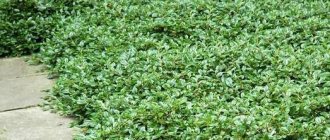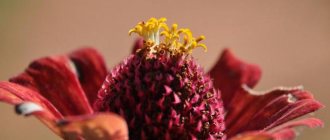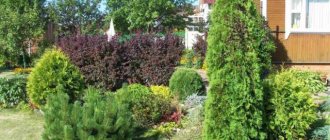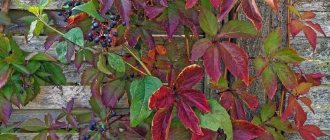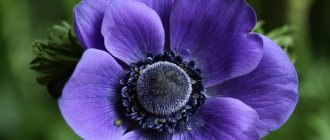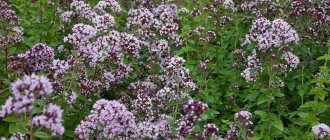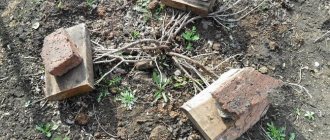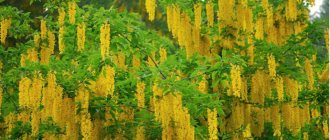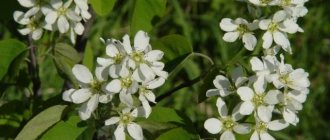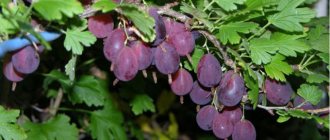Description of appearance - photo
To date, approximately 40 species of gazania are officially known to exist in natural conditions. This “exotic beauty” came from southern Africa. It got its name in honor of Theodore of Gaza, a priest who lived in Italy in the 15th century.
Gatsania flower is an annual or perennial of low growth. The stem is either short or completely absent. The rosette is formed by green or gray-green leaves tightly pressed together. The shape of the leaves can be very diverse. You can find feathery and elongated leaves with silvery pubescence on the lower part.
Flowers up to 10 cm in diameter. The petals are elongated in the form of tongues. They have different colors depending on the variety. In nature, there are red, orange, white, bronze, and white plants. During the season, an adult shrub forms up to 30 inflorescences.
At home, they grow on loose, gravelly soils in arid areas with high air humidity at night. The root is a taproot, which in dry times allows the plant to extract water from the depths.
- During the flowering period, many bare peduncles continuously appear from the base of the gazania rosette, slightly rising above the leaves.
- Peduncles, depending on the variety, reach a height of 15-30 cm. They are crowned with large single inflorescences-baskets, exceptionally bright and spectacular, yellow, orange, white or dark red, 5-9 cm in diameter.
- Along the edge of the inflorescences, false-ligulate flowers are located in one row. Depending on the type and variety, they can be of different colors, but the base of each is decorated with a dark spot, creating a finely outlined ring pattern.
- Dark spots give a special charm to the inflorescences, and are reminiscent in color of the “eyes” of a peacock’s tail.
In the center of the inflorescence-basket are numerous small tubular flowers, which are dark purple and dark brown. At night and in cloudy weather, false-ligulate flowers curl along their length and cover the central tubular ones. Pseudoligulate flowers are sterile. Seeds are formed only in tubular bisexual flowers.
Achenes are hairy, with a tuft. In 1 g there are up to 250 seeds that remain viable for no more than two years.
Gazania and Gazania - what are the differences?
These names are no different; they are the same flower. The plant was named after the Italian priest Theodore von Gas. However, despite this, in different countries it is called gazania and gatsaniya the same way. Due to the fact that its bright buds open at midday, it is known among flower lovers as midday gold.
Types and varieties
The advantage of gazania lies not only in its beautiful flowers, but also in the extraordinary variety of varieties in amazing colors and combinations. The genus Gazania includes 18 species. Let's look at the most common ones.
Harsh
The perennial gazania is harsh (lat. Gazania rigens or Gazania splendens), up to 30 cm high. The shoots are very shortened, branched, creeping below, ending in a bunch of raised leaves. The elongated leaves, 10-15 cm long, are covered with coarse hairs on the outside and white underneath. Variety G. rigens var. leucolaena has silver-green leaves on both sides, the cultivar G. rigens var. uniflora has smaller inflorescences on short pedicels.
Each shoot ends in a flower basket located on a long stalk. Second-order shoots grow from the leaf axils of the main shoot and continue to branch.
The flowers are brightly colored and resemble miniature gerberas. Blooms from early summer until the first frost. The flowers are collected in flower baskets with a diameter of 8 cm, which are opened only in full sun from 10 a.m. to 4 p.m. On cloudy, rainy days the baskets are closed.
Photo. Gazania is a bit harsh
Gazania is suitable for flower beds; it can be cultivated as a ground cover plant, grown in containers on balconies, in gazebos in well-lit places. Currently, typical forms of this species are rarely cultivated; most new ornamental varieties are hybrids of several species.
In our country, due to the climate, gazania rigidifolia is grown as an annual plant. Requires a position in full sun, fairly dry soil, sandy, well drained. Overwinters at temperatures from 5 to 10 °C.
Due to the closure of inflorescences on cloudy days, gazania has not gained much popularity; it blooms profusely only in warm and sunny years. However, recently several groups of varieties have appeared that are less sensitive to lack of light:
- daybreak,
- Kiss.
Varieties “Clear Orange”, “Clear Vanilla”, “Clear Yellow” - suitable for planting in containers and soil. The advantages of these varieties are resistance to drought, very abundant flowering throughout the summer, large inflorescences (10 cm in diameter), with flowers that open even on cloudy days. They look very impressive next to plants with silver leaves.
Varieties:
- "Gazoo" - profusely flowering plants with monochromatic flowers.
- “Big Kiss Yellow Flame” – height 25 cm, diameter of inflorescences – 10-12 cm, decorative stripes on the petals.
- "Big Kiss White Flame" - large striped flowers, shoots 25 cm high.
- "Kiss Bronze" - compact, profusely flowering variety, dark orange flowers.
- "Kiss Yellow Red Flame" - yellow-red flowers.
- "New clear day orange" - orange inflorescences.
- "New day yellow" - yellow flowers.
- "Clear vanilla" - light yellow flowers.
- "Talent" - distinguished by gray leaves.
- "Kiss white" - white inflorescences, yellow center of the flower.
- "Kiss Mahagon" - red inflorescences with a hint of mahogany.
Hybrid
Gazania × hybrida is grown as an annual under our conditions. Plants with raised shoots and flowers up to 10 cm in diameter. Blooms from June to late autumn. Ideal for flower beds and growing in containers.
Photo. Gatsania hybrid
Large-flowered
Grandiflora gazanias are also annuals. Blooms from July to October. More demanding than the brilliant gazania, it is more difficult to grow. One of the most beautiful views.
Height – 30-40 cm. Used for flower beds, rock gardens, containers, window boxes. Requires fertile, well-drained, dry soil in a sunny position.
Photo. Large-flowered gatsania
Linear
Perennial linear gazania (Latin synonyms of the species - Gazania linearis, Gazania longiscapa, Gazania pinnata) - a species with chamomile-shaped flowers reaching a diameter of 8 cm. It blooms from April to late autumn, forming dense clusters. Leaves are lanceolate.
Photo. Gatsaniya linear
Krebsiana
The perennial gazania Krebsiana (lat. Gazania krebsiana) is found naturally in South Africa. Flowering lasts only a few weeks after the first rains. The showy flowers open only in bright sunlight. The leaves are snow-white on the underside.
Photo. Gatsaniya Krebsiana
Single-flowered
Single-flowered gazania (lat. Gazania uniflora) is the lowest species, the height of the shoots reaches 10-12 cm. The leaves are oblong, with a gray tint. It blooms with white, yellow or yellow-orange flowers.
Photo. Gatsaniya single-flowered
Gatsaniya - annual or perennial
African chamomile varieties are divided into annuals and perennials. They come in striking, contrasting shades. There are also hybrid varieties.
Gazania perennial
Gatsania perennial is a compact shrub crop. The maximum height is 30 cm. There is practically no stem. It turns out that the leaves come directly from the ground. It looks interesting and unusual. The gray-green foliage is very densely spaced. At the very bottom the leaves are drooping. This is the reason for moisture retention near the base of the root system. Winter is not scary for perennials, because there are fibers inside the plates. They serve as reliable protection for the flower from drought and hypothermia. A distinctive feature is the presence of spots at the base of the petals.
Note! Flowers bloom only when exposed to direct sunlight.
In twilight or cloudy weather, they are rolled up into a tube. The flowering period is long - from July until the onset of the first frost. When the flowering period ends, fruit formation begins. They are a box with villi in which the seeds are located.
Gazania annual
Low shrubs obtained through the process of crossing. The front side of the leaves has a rich dark green color, and the back side is gray, with a touch of silver. Ideal for growing on loggias and balconies.
Gatsania is a bit harsh
Gatsaniya harsh is distinguished by various shades of flowers - bright yellow, orange, rich red and even brown. A feature characteristic of this species is the rapid opening of the bud at the beginning of the day and the rapid closing at the onset of evening.
Features of container format gatsaniya
The indoor career of gatsania is mainly connected with the desire to preserve bushes that bloom before frost and extend their flowering period into the winter months. Gatsanias do not stop flowering even in late autumn. And if the plants are transferred from the garden to pots and put away in winter gardens, greenhouses or rooms, you will be able to admire the beauty of the amazing midday daisies for many months.
Those who have at least once seen the beautiful gatsaniya in an indoor format can no longer refuse to grow it. Moreover, even in summer the plant grows and blooms beautifully in rooms and on balconies. But increasingly, gatsaniya appears in the list of annuals and perennials not only for the garden, but also for the interior.
Gatsania is often touted as one of the wonders of breeding, an artificially bred plant not found in nature. But species of Gatsania are an integral part of the flora of South Africa.
Despite the fact that these charming plants are found in gardens mainly as annuals, gatsanias remain herbaceous perennials, and in suitable conditions they will overwinter and bloom the following year.
Gatsania belongs to the stemless herbaceous perennials. They develop in the form of compact basal rosettes, from the center of which large flowers rise on strong stalks.
Gatsania's modest size compared to other Asteraceae makes it a particularly suitable candidate for potting. Gatsania, even in gardens, does not raise flowers to a height of more than 30 cm, remaining amazingly compact and modest. Gatsaniya is characterized by a strikingly powerful rhizome with a long tap root, which requires a specific choice of containers for growing the plant.
Their elongated-lanceolate, polymorphic, often turning into an elongated-pinnate and partially pinnate form, the leaves, variable even in one bush, are very bright. Dark green, always appearing fresh and dazzling, they unexpectedly surprise with a rather hard texture and a silver back that seems too unexpected for a plant.
The contrast between the smooth outer side of the leaf and the pubescent underside is quite original. Gatsania bushes look elegant even without flowering, pleasantly contrasting with any other indoor crops.
Container format gatsaniya requires deep containers.
How to grow gatsaniya at home
It is best to plant gatsaniya in a sunny place. Even in lightly shaded displays, if there is not enough sunlight, perennial flowers will not grow. On cloudy days and rainy years, gatsaniya blooms poorly, the flowers remain closed and fall off.
The soil
Perennial African chamomile needs to be planted in fertile, not too wet, well-loosened garden soils. The pH value of the soil does not matter. On highly permeable soils, gatsaniya requires frequent watering during the first two weeks after planting. When a perennial young plant takes root, it tolerates short-term drought - care becomes easier.
Watering
The peculiarity of this perennial plant is that it tolerates drought well. If there is a lack of water, flowering is weaker, so it is recommended to water the gazania well in hot and dry weather. There is no need to water the plant too often or abundantly; it is enough to water as the soil dries. It is better to moisten the soil in the morning so that the water remaining on the leaves can dry out before night. This type of care for gatsaniya will help avoid fungal diseases on perennial bushes.
Growing and care in open ground
By providing the plant with a sunny, bright position and suitable soil, you will not have to take too much care of it, with the exception of watering and fertilizing. Growing gatsaniya in pots and containers is more difficult - proper fertilization and irrigation become very important factors. Faded inflorescences should be cut off. Removing spent flowers on a regular basis prolongs the flowering period.
Watering
Caring for gatsaniya includes regular watering. Although this plant does not tolerate wet soils, it needs to be watered during hot summers. Gazanias grown in the garden are watered only when the soil is dry. It is worth mulching the soil around the plant so that it does not dry out too much. Lack of water makes flowering weaker.
In hot, rainless weather, it is enough to water the gazania once a week. Watering should be done in the morning to allow the leaves to dry during the day. This will prevent the development of fungal diseases.
Fertilizer
Gazania is a flowering plant and should be fed regularly. Every 2 weeks it is fertilized with a multicomponent fertilizer.
When growing in pots, you can use a multi-ingredient liquid fertilizer for flowering plants every 7-14 days.
Diseases and pests
Gazania tough is resistant to diseases. But if the flower is over-watered or it rains frequently, it may become affected by root rot. With excessive moisture, the plant can be affected by:
- gray rot;
- powdery mildew;
Attention! Excessive watering can lead to yellowing of leaves, premature loss of flowers, and rotting roots. You need to wait to water until the soil dries out.
Gazania can also become a victim of pests:
- spider mite;
- thrips - leave silver spots and stripes on the leaves (then black spots appear on them);
- slugs - damage the roots of the plant;
- aphids - a plant infected with aphids grows poorly, the shoots will begin to fall off and turn yellow and wither.
If pests appear, it is necessary to treat the flowers with insecticides according to the instructions.
Wintering at home in a pot
Most gazania species are perennials, but the plants exhibit poor frost resistance, so in our climate they are grown as annuals if they are left in the garden for the winter. It is possible to save them until next season. It’s worth finding out how to preserve gatsaniya for the winter.
You can move potted plants to a bright room with a temperature of 5 to 10 degrees Celsius for the winter. To do this, bushes growing in the garden are dug up, flowering shoots are cut off, and planted in pots.
Gatsania is stored in winter as a potted plant.
In winter, home care during the dormant period includes regular soil moisture checks. The soil should not dry out excessively, so regular watering is necessary. No need to pour in too much water. In the spring, when the frosts are over, you can plant flowers in the garden.
The gazania flower is unique and extremely decorative. Although growing gazania is not the easiest thing, it is worth decorating your garden or balcony with it. It is enough to provide the flower with suitable conditions and plenty of sun to enjoy its beauty. These plants are not very popular in our climate, but deserve attention.
Gatsania propagation
When choosing when to plant gazania grown from seeds, it is worth taking into account the climate zone. Plants are planted in the ground when the danger of frost passes - in the second half of May.
Gatsania seeds are collected after flowering. They look a little strange because they are very hairy. The seeds are spread in an even layer on a sunny windowsill. When they are dry enough, put them in an envelope for storage. There is no need to refrigerate the seeds.
Sowing seeds
If you plan to propagate a flower through sowing seeds, it is advisable to take care of planting material in advance. To do this, after waiting for the seed pods on the shoots to fully ripen, you can carefully cut them off and take them to a dry place. When the seeds dry well, they can be sown for 2 years. During this period, planting material retains maximum germination. Before planting gazania, it is advisable to lightly water the prepared soil.
Growing seedlings
Some gardeners carefully place gazania seeds in boxes to grow seedlings. The process begins at the end of winter. Spacious and fairly deep boxes are filled with soil rich in microelements, which includes:
- natural peat;
- purified sand;
- humus or turf soil.
Planting material is laid out on its surface like on a chessboard. The distance between the sprouts is 2.5 cm. They are covered with sand (a thin ball) on top and watered with a spray bottle. After this, the containers are covered with cellophane or glass and taken to a warm, bright room. After one or two weeks, the first shoots appear.
When several leaves (2 or 3) grow on the surface of the soil, it is advisable to plant the seedlings in separate pots or cells. Next, it is important to prepare them for planting in the front garden outside, using simple rules for hardening off the plant. A daily supply of fresh air, through an open vent, window or door, will prepare the plant for new living conditions.
Picking
It is better to immediately pick the seedlings into peat-humus pots, because gazania forms a rather long taproot, and with this method of picking, when planting plants in the garden, the root system will not be injured.
You can grow gatsaniya without picking. For example, if the seeds are sown in peat humus tablets.
There are gardeners who rarely sow seeds in a deep box. Then they do without picking, and when transplanting into the garden, so as not to damage the root, using a long scoop, each seedling with a lump of earth is transferred to a planting hole.
The seedlings, 7-10 days after picking, are fed with complex fertilizer. After two weeks, the next feeding is carried out. It is advisable to harden the seedlings before planting. In central Russia, gazania is planted in a flower garden in mid-May. Seedlings are planted with a damp clod of earth or in peat pots, maintaining a distance of 15-20 cm between plants.
Growing gatsaniya from seeds
Sowing seedlings
The time for sowing a given plant for seedlings directly depends on the climate in which the gardener lives. If there is a cold and late spring, then sowing seeds too early will require additional lighting of the seedlings. Without additional lighting, the plant will grow and develop much slower than expected due to lack of light. Sowing seeds, for example, in May will lead to the fact that you will be able to admire the flowering of gazania relatively later. In this regard, it is recommended to sow seeds in the second half of March, and preferably in mid-April. For sowing, high containers are used, this is necessary so that the long taproot does not bend during growth. The soil mixture for sowing should be well-drained, light, with a pH of 5.5 to 6.5. Sowing should be done sparsely. You can simply distribute the seeds over the surface of the substrate in a checkerboard pattern, and the distance between them should be from 2 to 3 centimeters. You can pour a thin layer of substrate on top of the seeds, or you can simply press them a little into the soil. Moisten the crops with a spray bottle and cover the container with film or glass. Then it is removed to a well-lit, sufficiently warm (from 18 to 20 degrees) place. Remember that it is necessary to remove condensation from the shelter and arrange ventilation every day. The first seedlings will appear after 7–15 days.
Seedling
If seedlings are grown in a deep container, then in this case they will not need picking. In other cases, after the fourth true leaf forms on the plant, it will need to be planted in a peat-humus pot. Then the seedlings are removed for growing in a place where it is somewhat cooler (from 12 to 16 degrees), while a loggia that is insulated but not heated would be an excellent option. From this moment you should begin hardening the plants. To do this, it is necessary to open the window for some time every day during the day, while protecting the gatsaniya from drafts.
Gazania: cultivation and care
How to preserve gatsaniya in winter
In order for the plant to overwinter and become a perennial, preparations for winter are carried out. The stages of work are as follows:
- All flowering shoots need to be cut off. Before the first frost, the African flower is dug out of the soil and planted in a pot.
- The pot is placed in a dry place, well illuminated by natural light, where the temperature in winter does not fall below 0 °C. The optimal wintering temperature for gatsaniya is 5-10 degrees Celsius.
- The substrate in the pot is kept slightly moist throughout the winter so as not to dry out the roots. This way the flower is preserved until next year, and gatsanya becomes perennial. At the end of February, the plant is divided and transplanted into fresh soil.
- During the next stage, the pot is moved to a warmer, brighter room (air temperature is maintained at 15 ° C) and watering begins more often to slowly awaken the perennial from winter dormancy.
After May 15, in cold regions in early June, when the risk of frost has passed, you can begin planting in open ground.
Description of the plant
Gatsania is a low-growing plant, which is a bush with a height of 15 to 40 centimeters.
There are annual and perennial varieties. The leaves are narrow, dark green or grayish in color. On the reverse side there are silver fibers. With their help, the plant survives cold and sudden temperature changes. They also retain moisture during drought.
Peduncles with inflorescences are separated from each other. The diameter of the flower ranges from 3 to 9 centimeters.
The petals have different colors. There are pink, red, white inflorescences. The most common ones are orange. Often the petal is colored unevenly, the main color is complemented by a darker longitudinal stripe.
The bush is distinguished by its abundant flowering - at the same time there can be up to 30-35 flower stalks on the gatsania. The petals open when the sun shines; on rainy days they remain closed. The flowering period begins in June and ends in October, when the first cold weather sets in.
Diseases and pests
Gatsania does not have a tendency to disease, but during its cultivation it may happen that the flower gets sick. Symptoms of the disease may include yellowing of leaves and deformation of flowers. There are also infections that directly attack the kidneys.
The infected plant will have to be thrown away along with the soil in which it grew. If silvery spots appear on the leaves, these are usually thrips. The bushes are treated with a suitable insecticide in the form of a solution. After applying insecticides 2-3 times over 10 days, the problem should disappear.
If white foam appears on the leaves, it should be removed with a stream of water. They pose a threat to the snail's delicate leaves. They also damage the roots of gatsaniya. Snails need to be collected systematically.
If aphids appear on the leaves, they are removed with an appropriate insecticide. Zolon 35% e.e. is usually used.
Description and main characteristics of gatsaniya
The South African flower gatsaniya (or gazania) is a bit like a chamomile in appearance, which is why it was called that. This is a low-growing plant of the Astrov family, which came to Europe in the middle of the 18th century, and was named after the Italian priest T. von Gas. It grows wild in Africa and coastal areas of Australia.
Gazania flower
Gatsania flowers are formed on a smooth, tubular stem 25 cm high and reach a diameter of 5-12 cm. The color depends on the variety and can be almost any: snow-white, rich or pale yellow, orange, all imaginable shades of pink, red. A distinctive feature is the darker and more contrasting strokes going towards the center of the flower.
For your information! The plant begins to bloom 3-4 months after planting the seeds. Its duration is determined by climatic conditions.
Gatsania has a flexible aerial part that creeps along the ground, the taproot. The leaves and stems are fleecy, silvery in color, and milky juice oozes out when cut. The upper part of the leaves is smooth, bright or dark green. The seeds are thin, elongated, black and white, with a small tuft.
Application in landscape
African chamomile is bright and has a variety of leaf textures. This is the real dream of any landscape designer. Below are several options on how you can decorate your garden with gazania:
- Framing borders. The small growth of the plant makes it suitable as a decoration for paths and borders dividing the garden into several separate parts.
- Creation of flower beds. The combination of gatsanias of different colors looks very good. The flowerbed looks luxurious.
- Creating patterns by alternating with voluminous greenery. You can make “zigzags”, “waves” and more complex patterns.
- When there are unsightly areas in the garden with blackening soil, you can plant African chamomile, which will hide this defect.
Gazania is suitable for almost all climate types. You only need to take into account that in cold climates it is dug up for the winter, but in warm latitudes it grows all year round. The plant only dislikes humid and monsoon climates, where there is a large amount of precipitation. It can withstand significant temperature fluctuations from –5 to +35 degrees, although most of its species do not like frosts at all and die immediately.
Role in landscape design
Gatsania is often used for landscape design. It has become popular due to its yellow flowers, which are striking in contrast. There are crimson-white, yellow-orange, red, white and other shades of culture.
Ways to use it:
- for decorating paths;
- visual creation of a border between individual areas of the site;
- rockery decoration;
- growing in a flower bed;
- framing the edges of the flower bed.
Attention!
In order not to harm the gatsaniya and to decorate your site, you should not plant it next to tall plants that can create shade.
If this flower is planted correctly on the soil, you can make unusual patterns, circles, zigzags, and different shapes.
